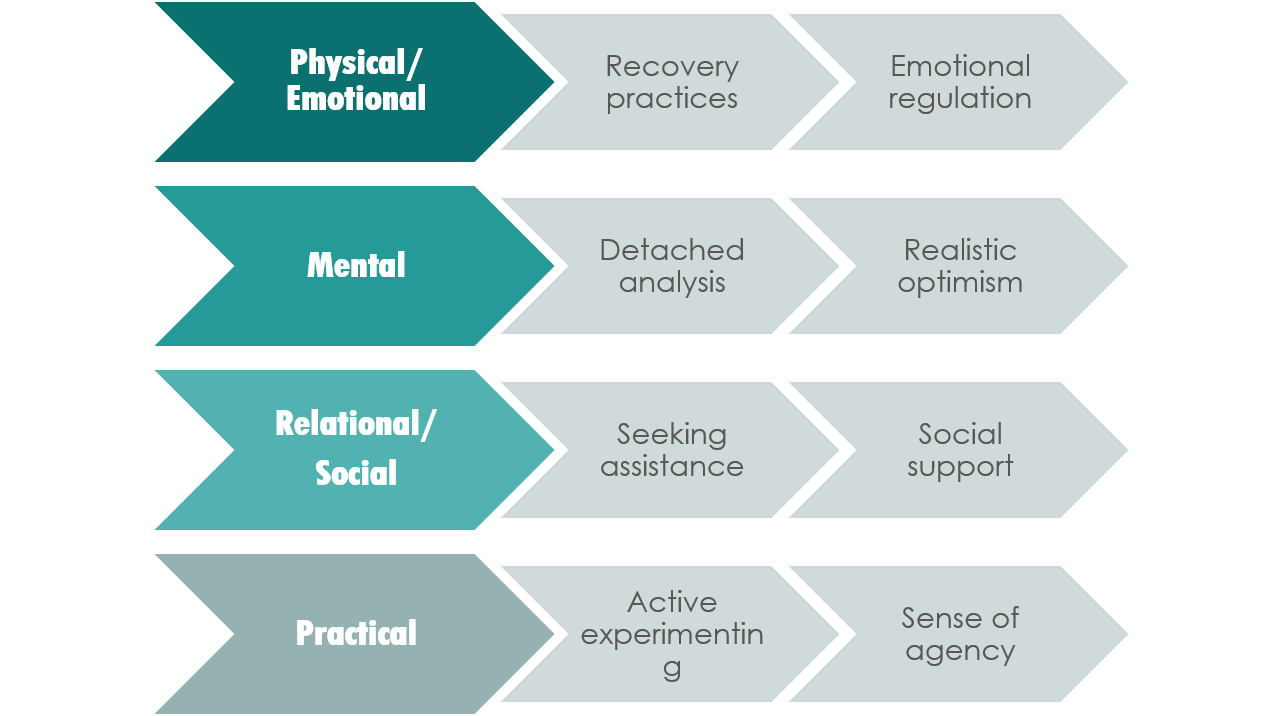Leading Libraries Series: Leading for Resilience
Introduction
The big idea: resilience factors
So if some people are naturally resilient, what can the rest of us do?
We can learn the ‘factors’ of resilience that these people demonstrate and develop our own personal practices for improving our own baseline in each area. True resilience includes emotional, mental and physical aspects: you need to be resilient
at all three levels to create maximum ‘bounce-back-ability’.
There is a significant amplification effect when any organisation or team has a small number of people who can demonstrate resilience under adversity – you can create a ‘resilient culture’ but only if you can start by building resilient
individuals.
Resilience factors: the learnable skills of resilience
There’s now a considerable research base in resilience and its learnable skills in positive psychology (the psychology of normal or high performing individuals). While authors tend to disagree in their emphasis of the different factors, the
skills they recommend fall into four main groups illustrated in the Figure below. Much of the original work on learnable aspects of resilience was done by Dr Anne Masten – there is a fascinating talk on her findings ‘Anne Masten – Inside
Resilient Children’. Since she paved the way, there has been an explosion of research and ideas on the topic, most of which can be grouped into four key areas, shown in the graphic below.

The other modules in this series go into these domains in more depth and, importantly, stress the learnable skills which you can develop to support your own resilience and practical ideas to help you help your colleagues and the teams of which
you are part.

Continue to: What is resilience?





